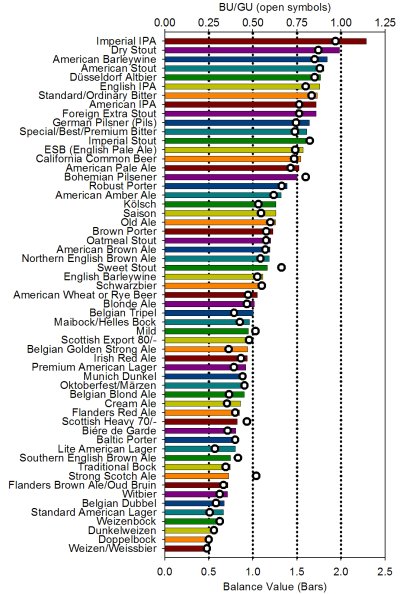ERD50
Give me a museum and I'll fill it. (Picasso) Give me a forum ...
OK, but I am not looking for a list of brands, more which styles are bitter/hoppy by design aside from IPA - so I can avoid them. Most of the places I go have local brews on tap, not the national brands - those aren't of interest to me.
.....
Just some examples that come to mind.
I don't think there is a definitive answer. There were some posts of styles that generally are less 'hoppy', and that can help in general (Gumby's list looks pretty safe and covers a nice range of styles), but three issues with that:
1) Not every brewer out there is brewing to BJCP or traditional guidelines, so their beer might not match a style name that closely.
2) The beer might not even reference a traditional style.
3) As you already know, there is no one way to describe 'hoppy'. A 'hoppy' beer might have enough malt and/or sweetness and/or body and probably other things (even the yeast and fining and storage techniques - most of which are not published) to bring them to a level that you are fine with. Or a beer with less hops, might present them in away you don't like.
Using the barleywine as an example. Many barleywines would not be considered 'hoppy' by most people. But some brewers make the hops stand out (sometimes called a 'West-Coast Barleywine). A style name isn't going to help you w/o knowing more about what the brewer was shooting for. But a good bartender or retailer should be able to match you with the traditional English style barleywines.
It's a little like trying to choose a car, and you want a bunch of specific features, but you only get three criteria to evaluate. You might eliminate a bunch of cars that don't meet those criteria. But three things won't tell you how it feels to drive that car, you need a test drive (taste).
You know you don't like IPAs. OK, don't order them. Try some from those lists, and ask at a good bar/retailer. Restaurants are normally not very informed, but there are exceptions.
I'm curious if you like a more mild APA - Sierra Nevada Pale Ale is widely available, and IMO, 'nicely' hopped. Not overly-anything, much tamer than the IPAs out there. If that is 'yeeech' to you, it would tell me a lot about just how much you dislike that hop flavor.
I can't drink Hefe's - I'm super sensitive to the phenols (clove-like, antiseptic taste) that the yeast throws, tastes like medicine to me, I can't even choke down more than 4 oz. Many of the Belgians have those characteristics, and it's pretty much a toss up if I will like them or not. It's tough for anyone else to describe them reliably, I have to taste them to find out (beer geeks can give me an idea if they are 'clovey' or not, and that helps, but not always). You might be the same with hops.
-ERD50




